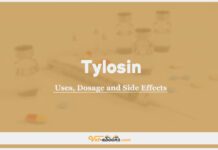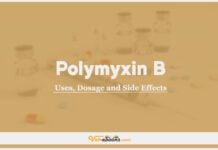Tobramycin In Dogs & Cats: Uses, Dosage and Side Effects

Overview
- Aminoglycosides inhibit bacterial protein synthesis; their mechanism of killing is concentration-dependent, leading to a marked post-antibiotic effect, allowing pulse-dosing regimens which may limit toxicity.
Uses of Tobramycin
- Treatment of Gram-negative infections.
- Less active against most Gram-negative organisms compared to gentamicin, but more effective against Pseudomonas aeruginosa.
- Ineffective against obligate anaerobic bacteria and at sites of low oxygen tension like abscesses.
- More pharmacokinetic research is needed, especially in cats who may be more sensitive to toxicity.
- Dosing guidelines provided are for general reference and should be adjusted based on clinical response.
- Potential side effects include nephrotoxicity and ototoxicity.
- Cellular casts in urine sediment are an early sign of impending nephrotoxicity, but their absence does not guarantee safety.
- Monitor renal function during use; serum creatinine levels may rise later, indicating fatal acute renal failure.
- Administer intravenous doses slowly; reserve use in geriatric animals or those with reduced renal function for essential cases only.
Dose of Tobramycin in Dogs and Cats
Dogs and Cats:
- Parenteral: 4–6 mg/kg i.v., s.c., i.m. q24h.
- For severe infections (including sepsis), doses as high as 12 mg/kg/day have been advocated, but should be used with caution given potential adverse effects.
Drug Dosage Calculator
You Should Give:
Side Effects of Tobramycin in Dogs and Cats
- Tobramycin is considered to be less nephrotoxic than gentamicin.
Contraindications of Tobramycin in Dogs and Cats
- Do not use ophthalmic products where corneal ulceration is present.
Some Notes:
- Avoid concurrent use of other nephrotoxic, ototoxic, or neurotoxic agents such as amphotericin B and furosemide.
- Increase monitoring and adjust dosages when these drugs must be used together.
- Aminoglycosides may be chemically inactivated by beta-lactam antibiotics (e.g., penicillins, cephalosporins) or heparin when mixed in vitro.
- Non-depolarizing muscle relaxants (e.g., pancuronium) effects may be enhanced by aminoglycosides.
- Synergism may occur when aminoglycosides are used with penicillins or cephalosporins.
Tip
Do You Want To Increase Your Veterinary Knowledge and Practical Skills?
You Can Now Browse and Download +3000 Books For Veterinary Professionals & Students Online.
Download Veterinary Books




















